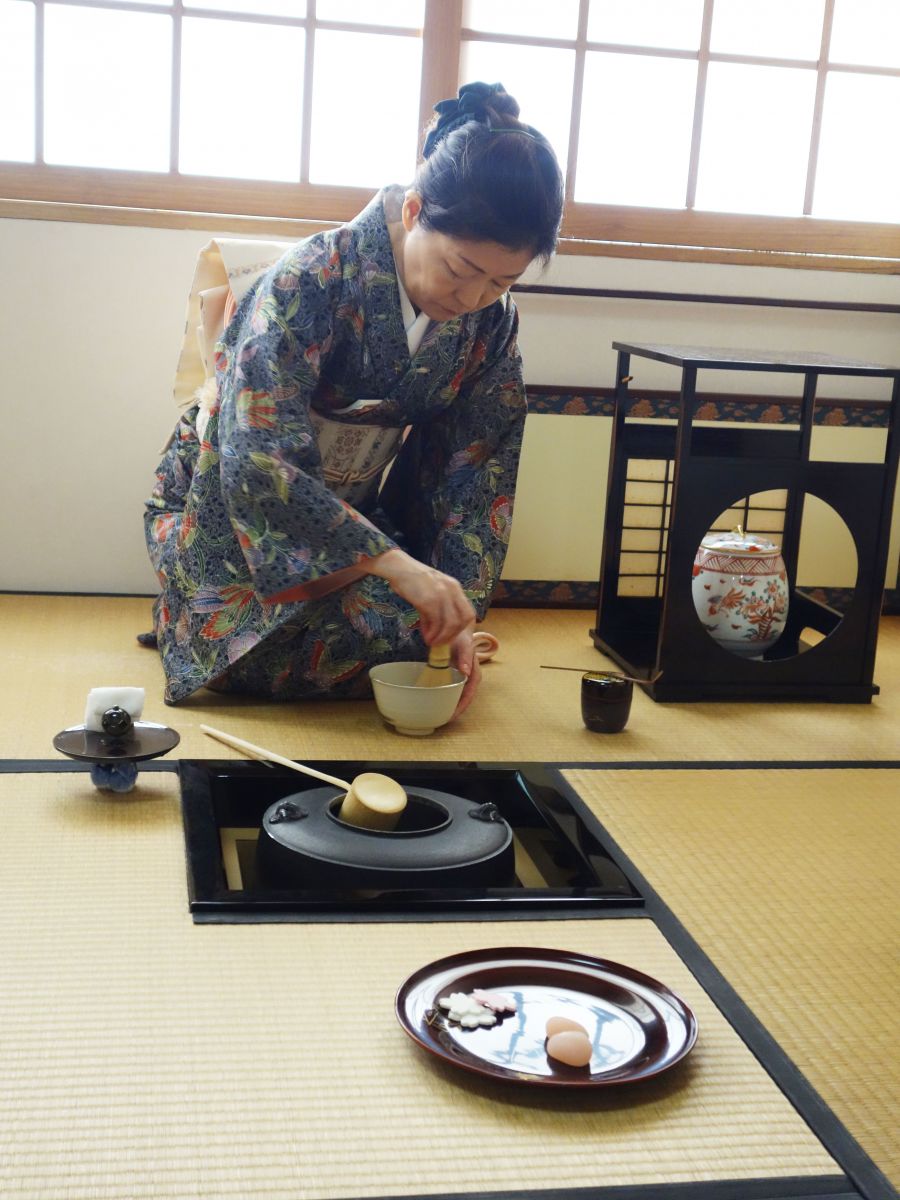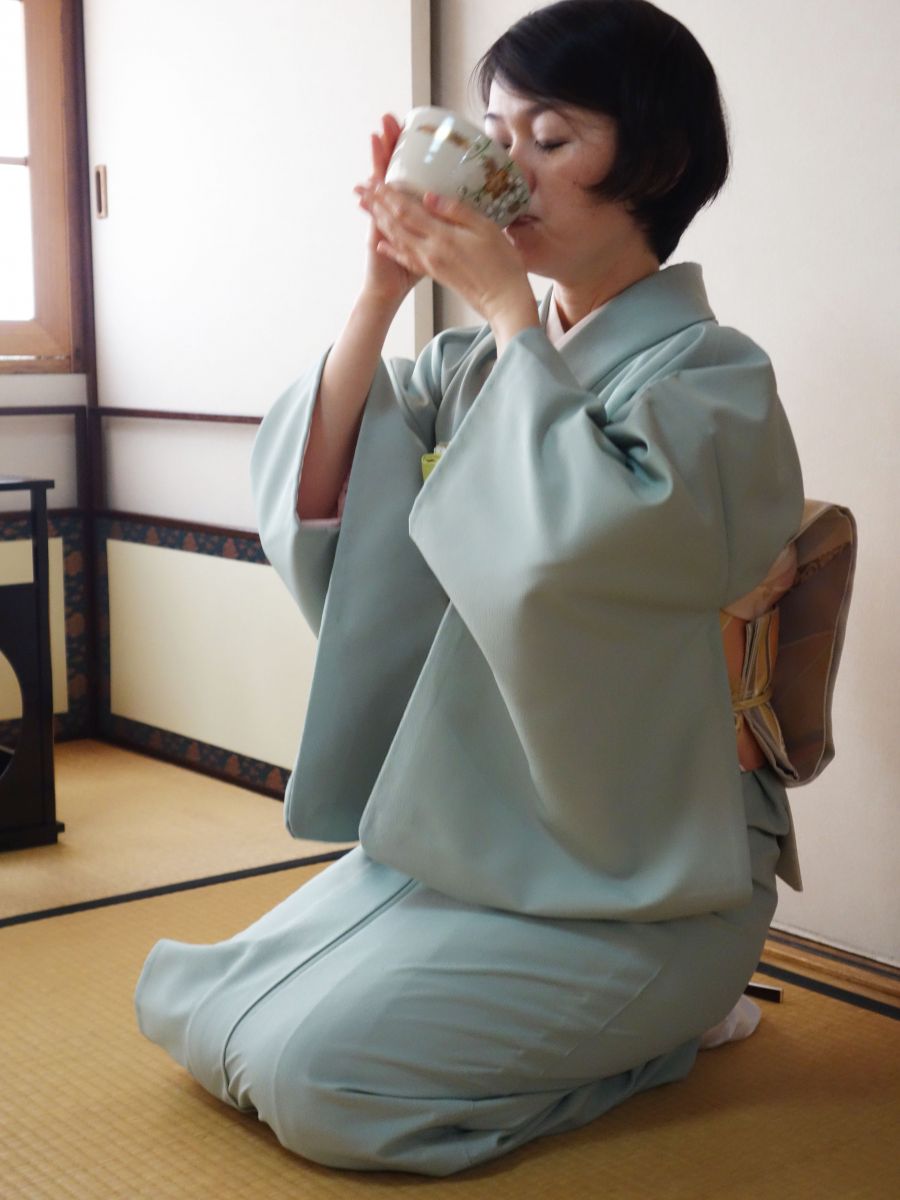|
Long before we arrived at the Japan Club of Kuala Lumpur to experience The Way of Tea, our hosts Mrs. Takano, Tea Master, and MCG member Michiyo Sielecki were busy with several other disciples at 8:30 am preparing for our 10:00 am arrival. Unbeknownst to us, the “behind the scenes” preparations were more than just boiling a pot of water and dropping in a tea bag or two! The Way of Tea is the ceremonial preparation and presentation of powdered green tea. In Japan, serving tea is an art and a spiritual discipline. |
|
|
Mrs. Takano explained that traditionally we would prepare ourselves to be a guest (and to receive tea) by walking through a garden and contemplating the coming event. Once we entered the Tea Room we all became quiet, removed our shoes, put on our clean white socks and became mindful of our surroundings. This was all so very new to me and I was intrigued! The ceremony referred to as CHANOYU or CHADO is very different from the ordinary way of drinking tea, it is an aesthetic pastime to the Japanese. So what does that mean? |
|
|
The room was clean and free of distractions. An alcove held a vase with gentle blossoms and a scroll hung on the alcove wall. The hearth was built into the floor and beside it was a small table with the all important jar of tea. On the same side of the room as the hearth was an entrance for the host, while we the guests came in from the opposite side of the room. Near our entrance was a beautiful opened gold and black fan with drawings of cherry blossoms on it. We learned later that it was cherry blossom season in Japan and so Tea Master Mrs. Takano, used utensils and bowls in that theme and that the scroll and flower arrangement also reflected the delicate blossoms in Japan. The room was peaceful and pleasant. |
|
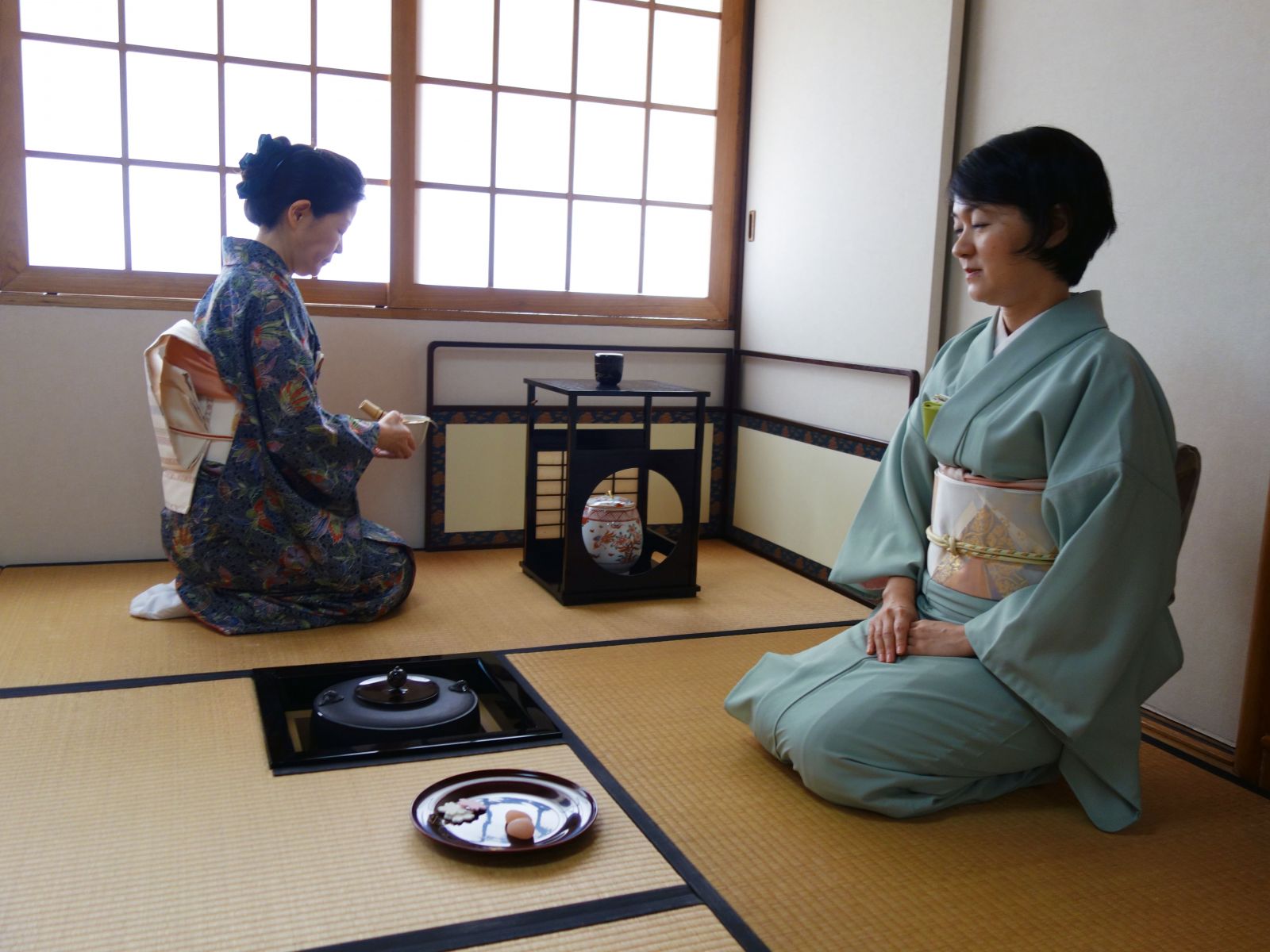 |
The attached photos show a Japan Tea Club member (in a printed kimono), playing the role of “host” while another member (in a solid pale green kimono) is the “guest”. The host is identified by a silk napkin that is slightly tucked into her belt at her waist. The guest placed a small fan on the floor behind her and had no visible napkin.
Before drinking tea, sweet desserts (thin cookies and glutinous rice balls) were served as no sweetener was used in the tea.
|
|
|
With very precise and choreographed movements the host meaningfully prepared the tea, poured the hot water, whisked it and served it to the guest without a word. The guest quietly and graciously accepted the tea, contemplated the beautiful drawings on the ceramic tea bowl and gave a little slurp sound of appreciation with her last sip when she was done drinking. All the movements by both the host and guest were very specific and must have taken years of practice. They moved about on their knees, or with shuffling feet, never once turning their backs to us.
The objective of the Japanese tea ceremony is to create a relaxed communication between the host and his guests. It is based in part on the etiquette of serving tea, but is also includes the intimate connections with architecture, landscape gardening, unique tea utensils, paintings, flower arrangement, ceramics, calligraphy, other elements that coexist in a harmonious relationship with the ceremony. Its ultimate aim is the attainment of deep spiritual satisfaction through the drinking of tea and through silent contemplation. |
|
|
Now it was our turn! The ladies that had been” host” and “guest” began to serve us and we became the guests! Each host bowed to us as they first placed the plate of sweets before us and then returned with bowls of tea. We all bowed back of course, and at least for me, a feeling of respect and peaceful tranquility filled my personal space. It was lovely!
Most of us sat on the floor which allowed us to closely see the exact movements and pauses of our hosts, but in a short time some of us wished we had been sitting on the bench at the back. Our bodies were not used to sitting on bended knees and many of us had a hard time eventually getting up and standing! We later asked Mrs. Takano (in the light grey kimono) how she managed to sit that way for so long and she smiled, saying it has taken years of practice. She also shared with us that it takes at least 10 years to become a Tea Master and almost daily practice to learn all the detailed movements so that they flow and appear effortless. |
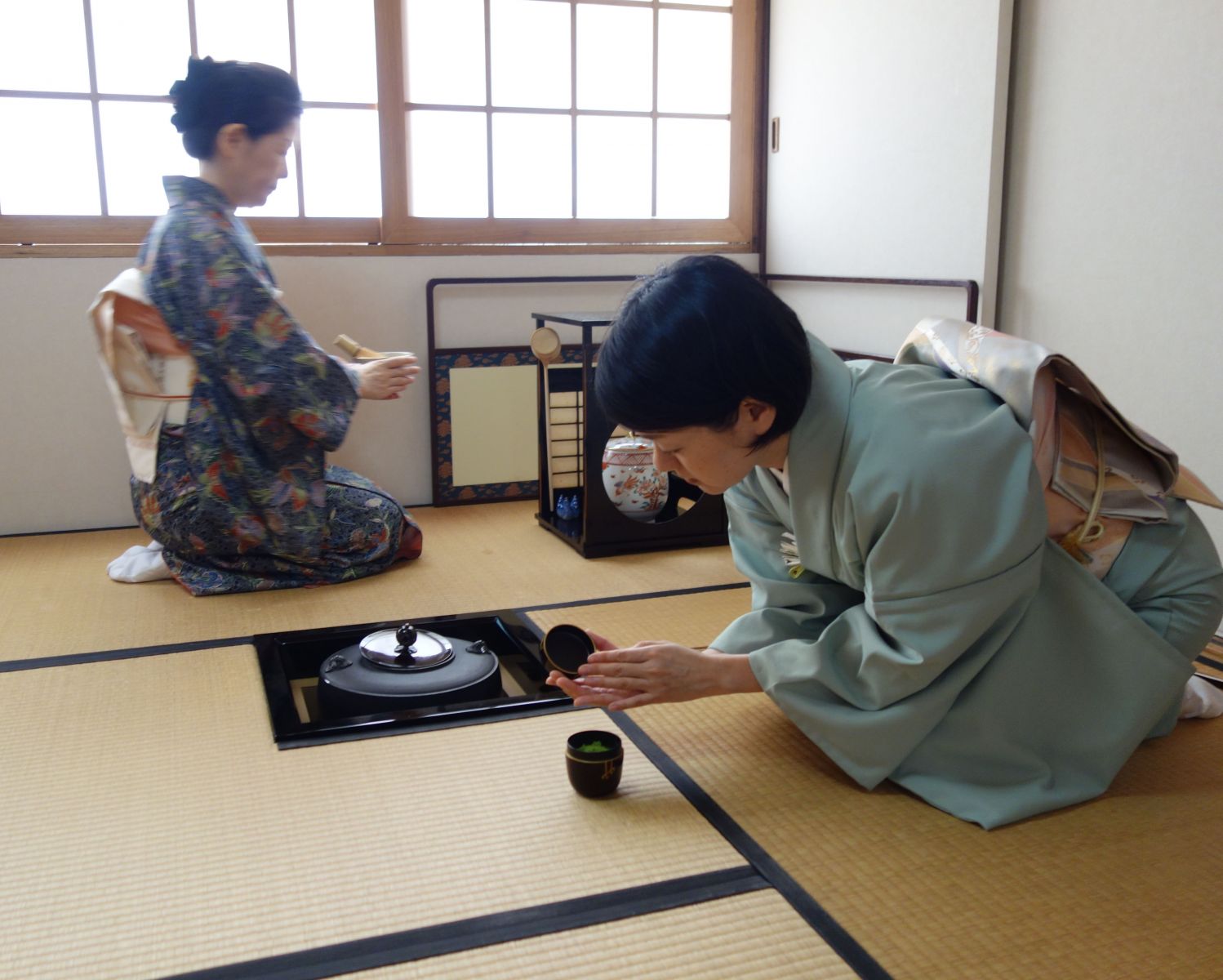 |
We were surprised to hear that all of the sweets and the special powdered green tea were brought personally from Japan by our MCG member Michiyo during one of her recent trips. The particular tea for the ceremony we participated in is only harvested twice a year, so the Tea Club purchases it in Japan to ensure they have the best quality and freshness. Mrs. Takano informed us that green tea was originally a herbal medicine and was not meant to be consumed in large quantities. There are actually two seasons for “the way of tea” and we had tea and utensils specifically for the winter season, November to April. Another hearth and different utensils would be used for the season from May to November. |
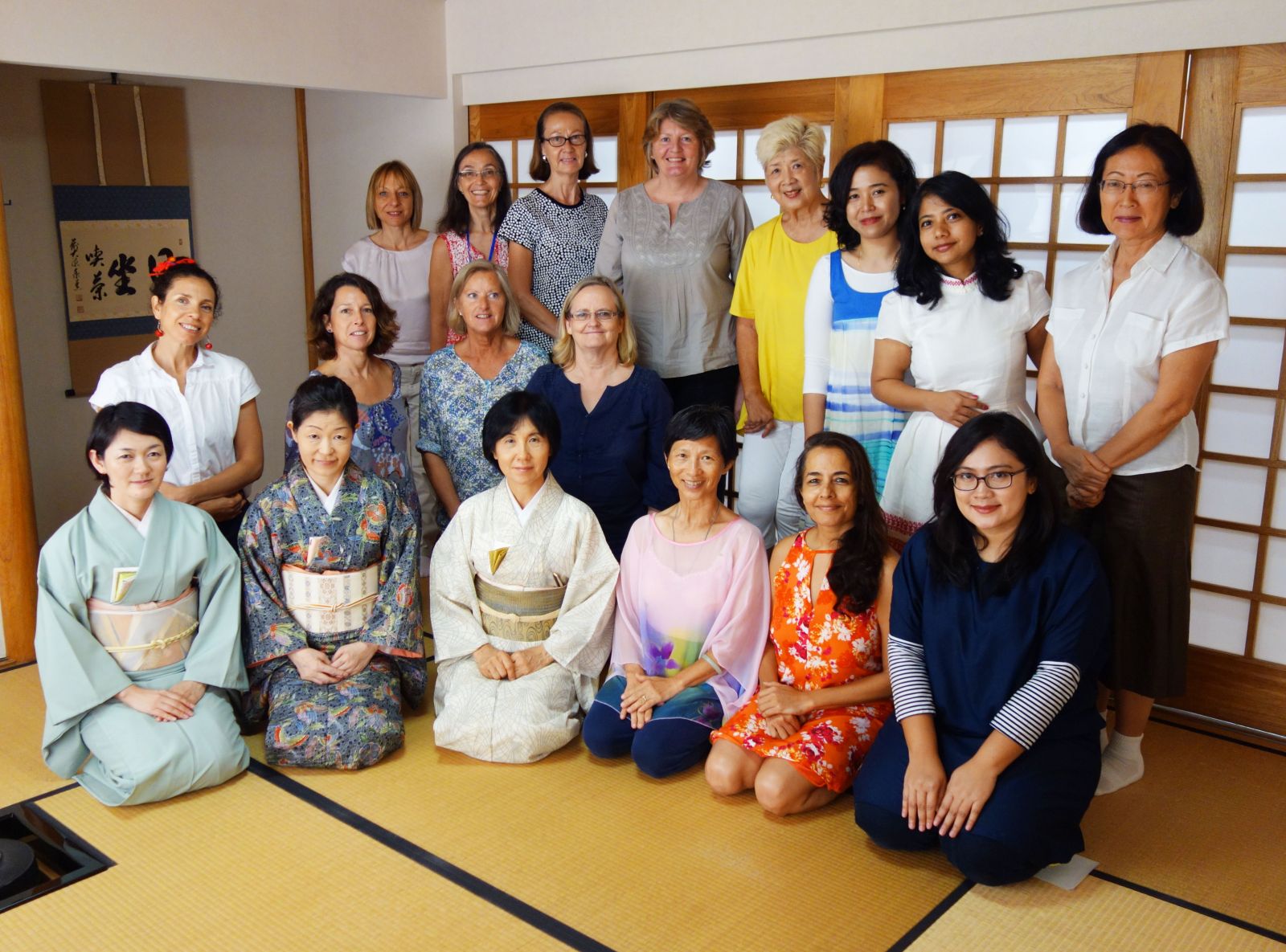 |
Sadly our visit came to an end. Tea Master Mrs. Takano, our friend Michiyo, and members of the Tea Club were wonderful hosts! Some of us hope to visit them again on Oct.23 rd when the Tea Club participates at the Japan Bazaar at the Pullman Hotel. We all enjoyed learning about the Japanese Way of Tea, and I am sure the experience will cause us to pause and be more mindful the next time we prepare our own cup of tea!
Written by Maryann Diakow, photos by Suparna Kundu and Rosemary Chin. |





